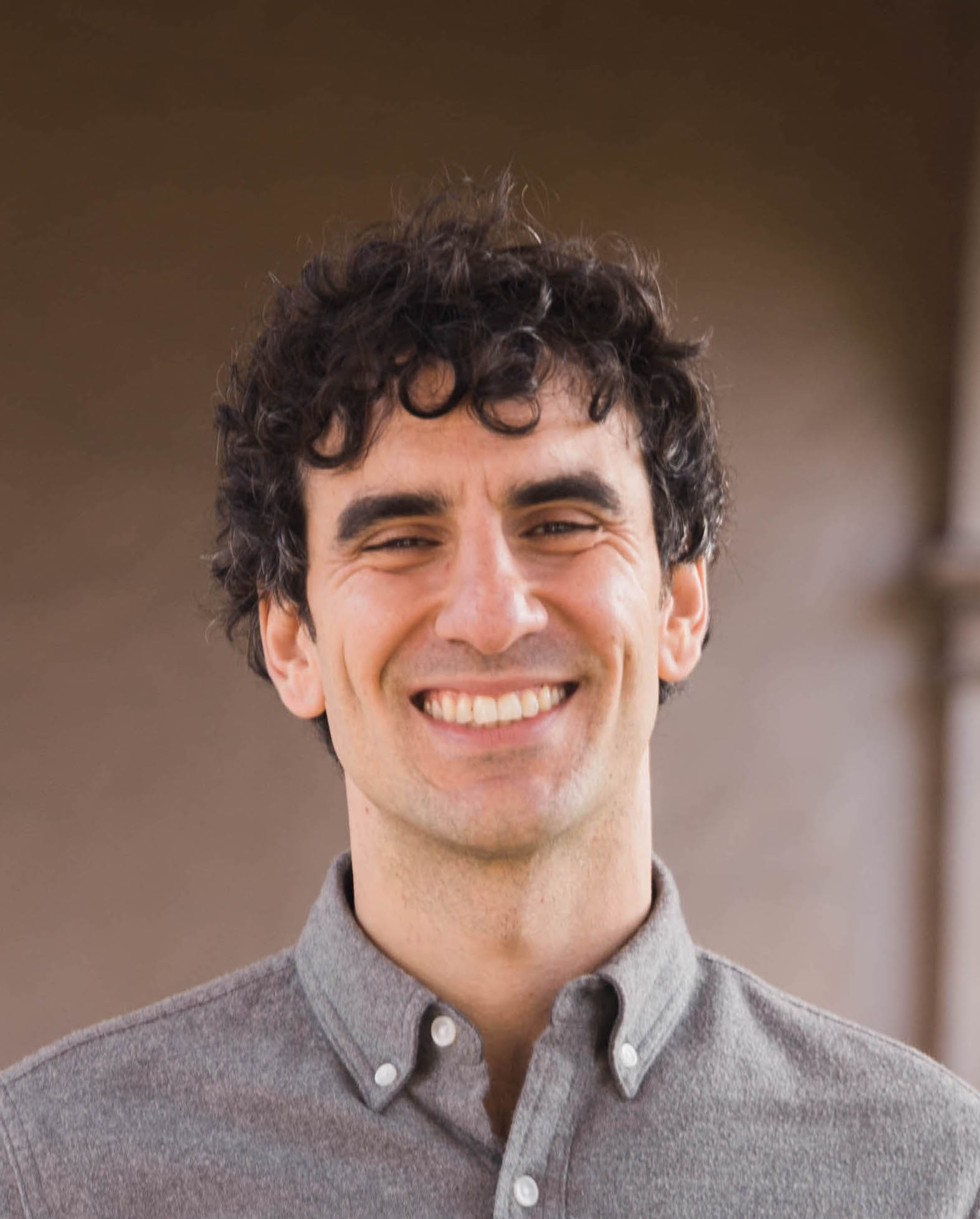Early Assurance Programs for Medical School
/What are early assurance programs for med school and how competitive are they? Learn how to decide whether an EAP is right for you, plus a complete list of schools that offer early assurance programs
learn everything you need to know about early assurance programs for medical school
Part 1: Introduction to early assurance programs
Part 2: What is an early assurance program?
Part 3: Pros and cons of early assurance programs
Part 4: What happens after acceptance into an early assurance program?
Part 5: Frequently asked questions about early assurance programs for medical school
Appendix: Complete list of schools with early assurance programs
----
Part 1: Introduction to early assurance programs
For most med school hopefuls, acceptance into medical school represents the culmination of a long, grueling process that is expected to end with a promising career in medicine. After years of hard work in high school and undergrad, being accepted into medical school is a huge milestone that provides validation for their efforts. Usually, the act of applying to medical schools takes place after the third or fourth year of undergrad, and students can begin preparing for the next chapter in their journey.
Some ambitious students show their dedication and commitment to a career in medicine early on. These high-achieving students know exactly what they want to do with their lives and are ready to commit to medical school even before graduating from undergrad or taking the MCAT. For these students, early assurance programs (EAPs) provide a way for them to become accepted into med school, freeing up their time and energy to stay focused on their studies. While there are no shortcuts to the physician pathway, early assurance programs can reduce the stress of getting in, lessening a premed’s worries about acceptance.
----
Part 2: What is an early assurance program?
Early assurance programs allow current undergraduate students the opportunity to apply to medical school and secure their spot before completing their undergraduate degree program. EAPs aren’t the same as BS/MD programs, though they do offer a similar level of security. While most premeds apply to medical school following their third or fourth year of college, those applying to early assurance programs usually apply after their second year. Students must meet specific criteria before and after acceptance into an EAP, including completing prerequisite coursework. Additionally, though students generally apply to early assurance programs prior to taking the MCAT, in some cases, the MCAT isn’t required for acceptees.
Requirements for an early assurance program
Overall, requirements for acceptance into a school’s EAP vary. In most cases, you’ll need to have completed a specific number of prerequisite courses, and you usually need to have only two years left of undergrad. Additionally, medical schools will be looking for a demonstrated level of commitment to medicine. You can illustrate this dedication in your personal statement, extracurriculars, secondary application (supplemental essays and letters of recommendation), and interview. They’ll also be looking for high-achieving students, which means your GPA–particularly your science GPA–will be crucial. Most schools require a minimum GPA of 3.5. Finally, you may have to submit your SAT/ACT scores from high school, and the schools that require the MCAT typically allow for lower scores than traditional applicants. (Those that don’t require the MCAT normally require your SAT/ACT.)
It’s important to note that some schools only admit students from their own institution, so be sure to look into this when you’re researching schools.
(Suggested reading: Does Undergrad Prestige Matter for Med School?)
----
Part 3: Pros and cons of early assurance programs
The idea of being able to apply to medical school early and have a guarantee for acceptance seems like a dream for many students—especially if the school doesn’t require the MCAT for acceptance. But, there are some things to keep in mind as you decide whether an EAP is right for you.
Pros:
Relief: It goes without saying that acceptance into medical school through an early acceptance program provides an incredible amount of relief to students! Once the application process is behind you, you can sit back with ease knowing that your path to med school is paved and secured. This will enable you to focus on your studies and dive deeper into them, ensuring that you’re able to keep your grades up and finish undergrad with a high GPA.
No/low MCAT requirement: The MCAT is known for being a long, arduous process that is very intense and causes a high level of stress. Being able to avoid it completely or knowing that the school’s required minimum is lower than if you were applying through the traditional route is a huge advantage. However, as enticing as this sounds, it’s not without its disadvantages, so be sure to read through the “cons” below.
Experience applying to med school: The medical school application process is tough; there’s no way around that fact. Applying to medical school through an early assurance program provides experience with the overall med school application process. In the event you aren’t accepted through the EAP, you’re still eligible to apply to medical school through the traditional route, and you’ll have a much better understanding of what that involves.
Cons:
No/low MCAT requirement: It may surprise you to see this listed as a con as well! After all, why would lower requirements—or none at all—seem like a bad thing? In most cases, this can be considered an advantage but it’s important to remember that if you decide to apply to another school later, you may not have time to improve your score.
For instance, you might apply to one school (that doesn’t require the MCAT), get accepted, and then forget about the MCAT completely. Two years later, if acceptance into the EAP wasn’t binding, you may decide that you’d rather attend another school. At this point, if you’ve not spent at least nine months preparing for the MCAT, you’re going to be at an extreme disadvantage. Additionally, since EAP programs that require the MCAT usually accept a lower minimum score, you might not push yourself to achieve a higher one. Should you apply somewhere else later, this lower score could hurt your chances.Binding commitment: If you know where you want to attend medical school, have always had one school in mind, and you’re not even considering any other school, then this may not seem like a con for you. However, most students apply to multiple schools. It’s important to keep in mind that if a school’s EAP requires a binding level of commitment, you won’t be able to apply to or attend any other school.
Honors classes required: For many EAP programs, applicants are required to take honors-level classes in college. College is a huge transition for students, and adding this requirement to an already stressful experience can be a con for some students. However, not all schools require honors coursework, so be sure to check with the school(s) you’re interested in attending.
(Suggested reading: How Hard is the MCAT? The Honest Truth)
----
Part 4: What happens after acceptance into an early assurance program?
Getting accepted into an early assurance program is a huge achievement that represents years of hard work and dedication. But while you can certainly breathe a sigh of relief, your journey is far from over. Understanding what comes next is crucial for maintaining your spot and making the most of this incredible opportunity.
Maintaining your EAP status
Think of your EAP acceptance as a conditional offer that comes with ongoing responsibilities. As we mentioned above, you’ll need to keep your grades up, and most programs require you to maintain a minimum GPA throughout the remainder of your undergraduate studies, typically around 3.5 or higher.
Beyond grades, you'll likely need to complete any remaining prerequisite courses with strong performance. This isn't the time to coast through organic chemistry or slack off in physics!
Your acceptance also doesn't mean you should let slide all the activities that got you there in the first place. Medical schools expect EAP students to continue demonstrating their commitment to medicine through research, clinical experiences, and community service. In fact, this is your chance to explore your interests more deeply without the pressure of needing to "check boxes" for your application.
Some students use this time to pursue meaningful research projects, volunteer in different clinical settings, or even study abroad. The key is maintaining that genuine passion for medicine that made you a compelling candidate in the first place.
Preparing for the transition
The time between EAP acceptance and medical school matriculation is perfect for both academic and personal preparation. Consider taking additional science courses that interest you, improving study habits, or even learning stress management techniques that will serve you well in the rigorous environment of medical school.
And don’t forget the personal side of having the extra time to plan. Use this time to build strong relationships with professors and mentors who can continue supporting you throughout your medical career. You might also want to start connecting with other EAP students from your future medical school. Your program might help facilitate these connections through social media groups or informal meetups.
Lastly, there could be additional support systems available to you. Many medical schools offer special advising, mentorship programs, or academic resources specifically for their early admits. Make sure you take advantage of these opportunities since they can go a long way to helping you thrive in medical school.
----
Part 5: Frequently asked questions about early assurance programs for medical school
Are early assurance programs binding?
The answer to this question depends on the school. At some schools, acceptance into med school through their EAP is binding, and students who get in must attend that school. Other schools do not require a binding level of commitment and allow students to apply to other schools if desired. Be sure to check the guidelines for any school you’re interested in attending.
How competitive are early assurance programs?
Competition is high for early assurance programs. Students applying through an EAP are committed to attending medical school but are using fewer pieces of data (such as test scores or grades for completed courses) to ultimately convince admissions committees of their dedication to medicine. Furthermore, most EAPs only admit a limited number of applicants and those students must not only meet GPA minimums but also maintain a certain GPA throughout their undergraduate years.
What is the difference between early assurance and early decision medical school?
The terminology can get a little confusing. We often find students think they are looking for an early assurance program when actually, they’re looking for an early decision program.
There are a few key differences between the two, some of which were mentioned earlier in this guide. We’ve attempted to clear this up by outlining the differences below.
Early assurance programs:
Typically available to current undergraduate students, usually during their sophomore year. Often, these programs are limited to students from specific colleges that are affiliated with a particular medical school.
Students apply early in their undergraduate studies, often before completing premed prerequisites or taking the MCAT.
Early decision programs
These programs are open to all students and are applied to later in your college career. By the time you apply, you’ve usually completed your premed coursework and taken the MCAT.
Students apply during the regular admission cycle for medical school, albeit earlier. The deadline is usually August 1st each year.
Is the MCAT required for early assurance programs?
As noted above, the answer to this depends on the school. Some schools require it while others do not. Additionally, those that do usually have a lower minimum score requirement for entrance into their EAP than through their traditional route.
Regardless, if the MCAT is required for a program you’re interested in, achieving the highest score possible will help you stand out.
How many early assurance programs can you apply to?
It is possible to apply to more than one early assurance program, however, many programs require pre-approval from a college’s pre-health advisor before applying. This will help you determine which programs you are eligible for and whether applying to multiple programs is in your interest.
Furthermore, you should consider the binding nature of early assurance programs since if you are accepted at one, you will be required to attend. This can complicate your efforts in case you are accepted to more than one. It’s best to discuss your options with a pre-health advisor or your school’s premed office.
Can you defer enrollment in an Early Assurance Program?
This varies significantly by program, and it's definitely something to ask about during your research phase. Some schools allow deferment for specific circumstances like military service, significant research opportunities, or family emergencies. Others are more rigid and expect you to matriculate directly after completing your undergraduate degree.
If you're considering a gap year for travel, work experience, or personal reasons, make sure to understand your program's policy upfront.
What happens if you don't maintain the required GPA for an Early Assurance Program?
This is probably the biggest fear of most students after getting accepted. The good news is that most programs understand that college can be challenging and offer support rather than immediately revoking your acceptance. Many schools have academic advisors who work specifically with EAP students to help them stay on track, so if you feel like you’re slipping make sure to reach out to them as soon as possible.
That said, consistently falling below the required GPA threshold can result in losing your spot. However, schools typically provide warnings and opportunities for improvement before taking such drastic action.
How do research opportunities differ for Early Assurance Program students?
In many ways, being an EAP student can open more research doors by allowing you to broaden your horizons a bit. Since you're not stressed about building a competitive medical school application, you can choose research projects based on genuine interest rather than what looks impressive on paper. Some programs even guarantee research opportunities or connect EAP students with faculty mentors at their future medical school.
Final thoughts
Getting into medical school is typically a long process that involves years of preparation, excelling in school, and impressing adcoms with an amazing application. While there are no shortcuts to this process, early assurance programs can help secure your spot years before other students. As with anything, there are pros and cons to early assurance programs, but proper research and due diligence can help you determine whether an EAP is right for you.
Appendix: Complete list of schools with early assurance programs
As of September 2025, there are 40 schools in the United States that offer early assurance programs. An asterisk next to the school name indicates that the school requires the MCAT prior to matriculation.
Alabama
Arizona
California
District of Columbia
Florida
Georgia
Illinois
Kansas
Kentucky
Louisiana
Massachusetts
Michigan
Minnesota
Mississippi
Missouri
New Hampshire
New Jersey
New York
SUNY Upstate Medical University - Norton College of Medicine*
University at Buffalo (SUNY) - Jacobs School of Medicine and Biomedical Sciences


